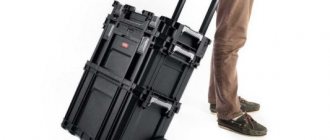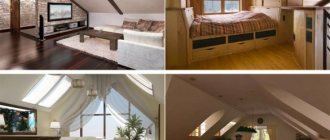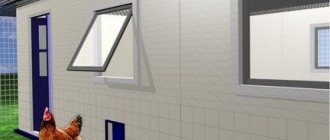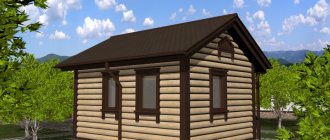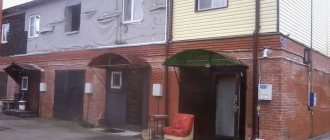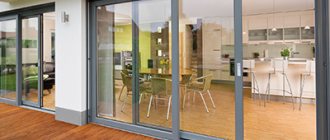A good friend of mine bought a dacha and ran into a problem. The family’s immediate plans do not include the construction of permanent housing, but they still want to come and spend the night on weekends. Easy-going and avid lovers of outdoor recreation, they found an elegant solution: they decided to build a bus and a house on wheels. It so happened that I became a consultant in the process: I helped decide on the vehicle option, select technical components and materials.
Source ytimg.com
About the types and advantages of motorhomes
A motorhome that combines transportation and living space makes travel as independent as possible. You stop thinking about booking hotels and purchasing tickets, move at a comfortable pace and stay where you want. In addition, my friends are still thinking about a house in the country, and during construction the motorhome can be used as temporary housing.
There are a variety of ready-made options on the market for both self-propelled motorhomes (vehicles with housing in a van, campers, often on the chassis of large trucks) and trailed structures (caravan, trailer). When choosing a project for self-production, we proceeded from the fact that there are two possibilities:
- Trailed design. Housing that is transported by car. To build it, you need a trailer that is suitable in size, or you can make the frame yourself.
Source ytimg.com
- Self-propelled design. In our native land, a homemade motorhome is, as a rule, a cargo van in the following variants: UAZ (“Loaf”), VW Transporter, Mercedes-Benz Sprinter or, for example, Iveco Daily.
A motorhome made with your own hands, in addition to saving money, has another important advantage. You can think over the layout based on your own needs, choose finishing materials that you like, and get an interior to your liking.
Dipa Vasudeva Carpenter's Mobile Home
To live in the car in winter, the carpenter turned the van into a cozy home. This took time, persistence and work. Deep lives in Prague, where winters can be as harsh as ours. Before remaking the car, he thought through everything to the smallest detail. Interior decoration is only natural (mostly wood). Every centimeter was used to allocate space for storing things and equipment. A stove was installed, which is used for heating and cooking. He fitted all the interior elements flawlessly and beautifully finished them. The front door turned out very beautiful.
The carpenter skillfully hid additional compartments under the floor, so he was able to create space for storing things. There is not a lot of space to live, but it is perfect for a mobile country house. And there was a place for Deep’s friend. The dog looks great in it. Behind the front door there is a small room for storing bicycles, etc. In this mini-house you can receive guests and drink tea with them.
A caravan is a unique solution for travelers. Everything you need is here. There is space for a small sink and washbasin. The inside of the van is well insulated. A vestibule has been built into which cold air will enter when the front door is opened.
Look in the catalog with prices for power tools from famous brands Festool MILWAUKEE Mirka VIRUTEX and others. “Arsenal Masters RU” will tell you about an exciting and successful business (based on a plot from the TV program “Extreme Vans”)
Device: what to consider
Before starting work, it makes sense to get acquainted with the process of making a motorhome from a trailer and camper. Design calculations will be required to ensure that the vehicle turns out well-built, safe and comfortable. The contents of a trailer (or minibus) may contain the following components:
- Minimum amenities: sleeping accommodations for all travelers.
- Various storage systems: shelves, drawers under seats, cabinets.
Source furnishhome.ru
If it is assumed that a homemade motorhome will be needed for long trips, it will be equipped more carefully. The atmosphere is complemented by those things without which it is difficult to imagine a comfortable trip:
- A bathroom combined with a compact shower and washbasin.
- Stove (induction or with gas cylinder).
Although a van is a larger structure, a trailer will be more labor intensive. This is due to the fact that for a house on the base of a trailer you will have to make walls and a roof, but a van already has them. The construction of both varieties takes place in the following order:
- Development of the project and selection of materials.
- Carrying out construction (external and internal) work.
- Laying communications.
- Arrangement (furniture placement).
Also, before starting work, you need to find out how to register the alteration with the traffic police.
Registration of conversion of a van into a motorhome
At the very beginning of the article, we mentioned that the motorhome must be properly decorated so that no problems arise on the roads. Therefore, before starting construction, it is worth agreeing on your plan and obtaining permission for the conversion.
There are many nuances in this process: weight, cargo or passenger vehicle, number of passengers, what will be inside, and so on. Sometimes it’s easier to seek help from a licensed company that will help you prepare documents.
After you have built a motorhome with your own hands, you need to obtain a certificate of compliance of the vehicle with the changes made to its design with the safety requirements of the Customs Union. And after that, contact the traffic police, where the car will be inspected and changes will be made to the title.
Be patient, as bureaucratic matters are not done quickly, and you may have to change something several times. However, once you've completed this step, you'll be the proud owner of a legitimate DIY motorhome!
- Share on Telegram
- Share on Vkontakte
- Share on Facebook
- Share on Instagram
- Share on WhatsApp
- Share on Email
Vehicle based
Before you start converting an old Sprinter, VW Transporter or Gazelle, you need to have a plan (it can be done by hand or in a specialized application). It will show the location of the bed, dining, kitchen and sanitary areas. Re-equipment begins with the body.
Source ytimg.com
Preparing the body and interior
Seats, upholstery and equipment, including wiring and lighting elements, are removed from the body. Then the necessary holes are marked and cut out in the sides. These could be windows, hatches, ventilation holes, gas and plumbing equipment. The edges of the finished holes are cleaned of burrs to protect against injury. Then the body is prepared for interior work, for which the following operations are performed:
- If necessary, the body is leveled. The inner surface (exposed metal areas) is then primed to protect the metal from corrosion.
- Cables are laid from the location of the battery to the points of consumption. It is important to choose the correct cross-section of cables so that the operation of household appliances is stable and the wiring does not heat up.
- Insulation is installed on all internal surfaces of the cabin (not only the walls, but also the floor and ceiling). Self-adhesive material (for example, Izolon) is suitable. It not only insulates the interior, but also reduces noise levels.
- If you are planning trips in the cold season, a sufficient layer of insulation is important: the better it can retain heat, the more you will save on heating.
Source retrailer.ru
- When the insulation is ready, the interior is sheathed using plywood or fiberboard. When choosing a material, its resistance to humidity and temperature changes is important. Weight is also important: the less the casing weighs, the less fuel consumption. Window and door openings and technological holes (for cables) are pre-marked and cut into the plywood parts.
Interior work
Among questions about how to make a mobile home, information about internal work is traditionally of greater interest, since it directly concerns the comfort of operation. In order not to waste time and money on alterations, you should take a responsible approach to drawing up the project. This especially applies to furniture, its functionality, size and fittings.
When making furniture for a motorhome, you should give preference to high-quality materials and fittings. To prevent the facades from opening while driving, you will need handles with built-in locks, and it is better not to skimp on their quality.
Source retrailer.ru
Internal work includes the installation of engineering systems: gas and water supply, as well as the installation of pipes with connections to the sink, shower, and toilet. The work includes a mandatory leak test. If you plan to use gas, the system is supplemented with a gas alarm.
The equipment of the internal space is completed with the installation of furniture systems, installation and connection of household appliances and appliances. At the finish line, checking the functionality of all devices and systems.
About a self-made mobile home in the following video:
Trailer based
For a homemade motor home from a trailer, it is important to decide on the dimensions. A trailer with dimensions of 2300x1600 mm will provide minimum comfort for travel and living purposes. There will be enough space to accommodate a sleeping place for two people, a compact table, drawers and shelves.
If you purchase a two-axle trailer up to 4.5 m long, you will be able to equip a full-fledged room with a kitchen and a bathroom. The disadvantage of this solution is the price, because in the end, housing on wheels will cost two to three times more. As for height, for owners of average height a ceiling of 2 m will be sufficient.
Source piramida-stroi.ru
The construction of a mobile home from a trailer (which my friends ultimately chose) is carried out in the following sequence:
- Lay the floor and bottom trim. The sides of the trailer are removed, leaving a horizontal base. If it is not rigid enough, reinforcement is made using a frame (for example, from a corrugated pipe).
- If the base is strong, a timber frame is bolted onto it; Logs are laid inside the resulting perimeter (in increments of 20 cm).
- The wood is treated twice with protective impregnation, and insulation is laid between the joists. The plywood (floor of the structure) is secured on top with self-tapping screws.
- A frame is assembled from timber, and the wood is impregnated with a protective compound.
- The frame is sheathed with plywood from the inside, not forgetting the openings for windows and doors; lay a layer of insulating material.
- The outside of the frame is galvanized and self-tapping screws are used for fixation. The corners of the structure are covered with a corner, and sealant is used to protect the corners and joints from water leakage. The door is hung on galvanized hinges.
- The interior layout varies, but usually it includes a folding table, and the seats (sofas) transform into a bed.
Source inhabitat.com
About the intricacies of building a mobile home in the following video:
Foretravel IH-45 RV costing about $1.4 million
Endless RVing/YouTube
The Foretravel IH-45, 14 meters long, comes with air conditioning and road noise suppression technology.
Endless RVing/YouTube
Inside you will find two sofas, an equipped kitchen and a small bedroom.
Foretravel of Texas
The interior also includes a washer and dryer, flat-screen TVs, and an outdoor entertainment area.
Briefly about the main thing
A homemade motorhome adds comfort and independence to any trip. There are two fundamental approaches to design: a caravan or a camper (based on a car).
A trailer home requires more labor due to the need to build walls and a roof, and is less comfortable due to space limitations. A motorhome is more comfortable, but will end up costing more. To produce any of these options, a project is prepared, materials are calculated, and communications are thought through. Additional savings can be obtained if you do not buy ready-made furniture (frames and drawers), but make it yourself.
Question
Write in the comments what you think - is it worth installing an electrical system with an induction cooker and an electric boiler (for heating water) in a motorhome instead of gas?
Categories
Let's look at each of the categories in detail.
C-class
Small-sized houses intended for short trips. Usually made on the basis of SUVs, so at night the cabin can be converted into a double bed (if desired).
Teardrop camper - cottage on a trailer
B-class
The only difference between it and the C-class is the berth - it is stationary and located at the rear of the vehicle. Very popular among young couples (at least in America).
A-class
Such houses, which look like a regular bus, are the most comfortable and, therefore, the most expensive. They are built on the basis of trucks, so from the point of view of transport classification they belong to category “C”.
They feature a large windshield, a fixed driver's seat and retractable partitions that create different areas and separate sleeping areas. Moreover, such structures are autonomous, equipped with a generator, have gas and a large supply of water.
Several additional categories can be distinguished.
